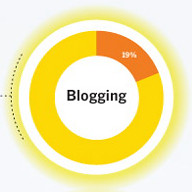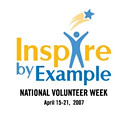Rush Limbaugh has seemingly revived the Don Imus debate despite coming under fire for very different reasons.
Whereas Imus made racially insensitive statements that some consider bad humor and others call rampant radio racism, Limbaugh has been airing a parody song entitled “Barack the Magic Negro,” a piece about African-American Sen. Barack Obama’s popularity with many white voters. While Obama's campaign has dismissed the parody as dumb and not something "anyone takes this too seriously,” some Limbaugh critics are attempting to do just that.
“We take these things seriously because there’s a consistent pattern of them making their way into the mainstream media and then the mainstream consciousness,” said Karl Frisch, a spokesman for Media Matters, as told to the Chicago Tribune. “It’s important to shoot these things down.”
The parody, which began in March, is receiving more attention now primarily because of the recent Imus case as well as increased threats with racial overtones being received by Obama. Such threats have prompted a special security detail to be assigned to him on the campaign trail.
The parody seems to poke less fun at Obama than it does Rev. Al Sharpton. The comedian singing the parody imitates Sharpton, bemoaning Obama’s popularity with whites who will, the lyrics predict, “vote for him and not for me ‘cause he’s not from da hood.”
As difficult as it is to do, an objective view might find that the parody is neither funny nor racist. It seems to be insensitive (perhaps ignorant and certainly offensive to some people) in its attempt to draw attention to presumed differences between the two men (Sharpton and Obama). Obama's campaign calls it right: it is not to be taken seriously.
In fact, taking the parody seriously, as Media Matters attempts to do, seems to risk more tension than the parody might generate on its own. It also seems to add more weight to a revived "PC" argument that censorship works. It does not.
No, I've never been a fan of name calling (especially along racial, religious, and economic lines), but I am a fan of the First Amendment. As such, I am predisposed to look at such issues differently.
Although name calling and unwarranted labeling causes an emotional reaction in all of us, I also think it makes more sense to let such rants stand because the words say a lot more about the name caller than the person or people being called a name. And if we overreact to other people's mistakes, it might say even more about us.
Case in point: I like Limbaugh all right, but perhaps he lost a little credibility airing this parody for so long. I used to like Media Matters somewhat, but it is becoming more and more difficult to like them when they pay a disproportionate amount of attention to what "people they like" say vs. what "people they don't like" say. It's silly at best and hypocritical at worst.
More importantly, we best serve ourselves by not giving in to our own fears by overreacting to people who call us names or poke fun at our faith, heritage, values, politics, professions, or even the color of our skin. Anytime you experience anger over what someone says, it might be worth considering where that anger comes from. Are we afraid they might be right or that other people might think they are right? Hopefully not; but often, sadly so.
I'm not saying we should ignore name calling or hate speech, but rather suggesting that there are ways to address ignorance without labeling it as racist (unless it is on its face). That might be more effective than censorship.
You know, at the end of the day, I'll probably disagree with Obama on politics, but today I agree with his dismissal of the parody. It was smart on his part. As for his heritage, it's as irrelevant to me as President Kennedy being Catholic or President Bush being from Texas. Try as some might to prove otherwise, labels and other nonsense sidebars really don't mean that much.

Whereas Imus made racially insensitive statements that some consider bad humor and others call rampant radio racism, Limbaugh has been airing a parody song entitled “Barack the Magic Negro,” a piece about African-American Sen. Barack Obama’s popularity with many white voters. While Obama's campaign has dismissed the parody as dumb and not something "anyone takes this too seriously,” some Limbaugh critics are attempting to do just that.
“We take these things seriously because there’s a consistent pattern of them making their way into the mainstream media and then the mainstream consciousness,” said Karl Frisch, a spokesman for Media Matters, as told to the Chicago Tribune. “It’s important to shoot these things down.”
The parody, which began in March, is receiving more attention now primarily because of the recent Imus case as well as increased threats with racial overtones being received by Obama. Such threats have prompted a special security detail to be assigned to him on the campaign trail.
The parody seems to poke less fun at Obama than it does Rev. Al Sharpton. The comedian singing the parody imitates Sharpton, bemoaning Obama’s popularity with whites who will, the lyrics predict, “vote for him and not for me ‘cause he’s not from da hood.”
As difficult as it is to do, an objective view might find that the parody is neither funny nor racist. It seems to be insensitive (perhaps ignorant and certainly offensive to some people) in its attempt to draw attention to presumed differences between the two men (Sharpton and Obama). Obama's campaign calls it right: it is not to be taken seriously.
In fact, taking the parody seriously, as Media Matters attempts to do, seems to risk more tension than the parody might generate on its own. It also seems to add more weight to a revived "PC" argument that censorship works. It does not.
No, I've never been a fan of name calling (especially along racial, religious, and economic lines), but I am a fan of the First Amendment. As such, I am predisposed to look at such issues differently.
Although name calling and unwarranted labeling causes an emotional reaction in all of us, I also think it makes more sense to let such rants stand because the words say a lot more about the name caller than the person or people being called a name. And if we overreact to other people's mistakes, it might say even more about us.
Case in point: I like Limbaugh all right, but perhaps he lost a little credibility airing this parody for so long. I used to like Media Matters somewhat, but it is becoming more and more difficult to like them when they pay a disproportionate amount of attention to what "people they like" say vs. what "people they don't like" say. It's silly at best and hypocritical at worst.
More importantly, we best serve ourselves by not giving in to our own fears by overreacting to people who call us names or poke fun at our faith, heritage, values, politics, professions, or even the color of our skin. Anytime you experience anger over what someone says, it might be worth considering where that anger comes from. Are we afraid they might be right or that other people might think they are right? Hopefully not; but often, sadly so.
I'm not saying we should ignore name calling or hate speech, but rather suggesting that there are ways to address ignorance without labeling it as racist (unless it is on its face). That might be more effective than censorship.
You know, at the end of the day, I'll probably disagree with Obama on politics, but today I agree with his dismissal of the parody. It was smart on his part. As for his heritage, it's as irrelevant to me as President Kennedy being Catholic or President Bush being from Texas. Try as some might to prove otherwise, labels and other nonsense sidebars really don't mean that much.





















